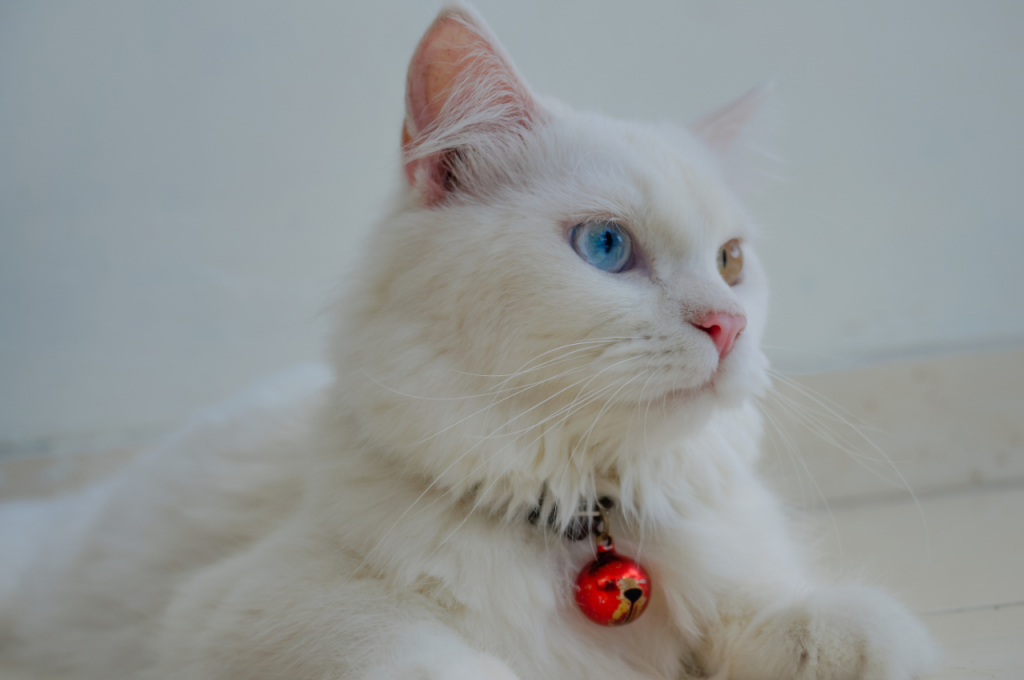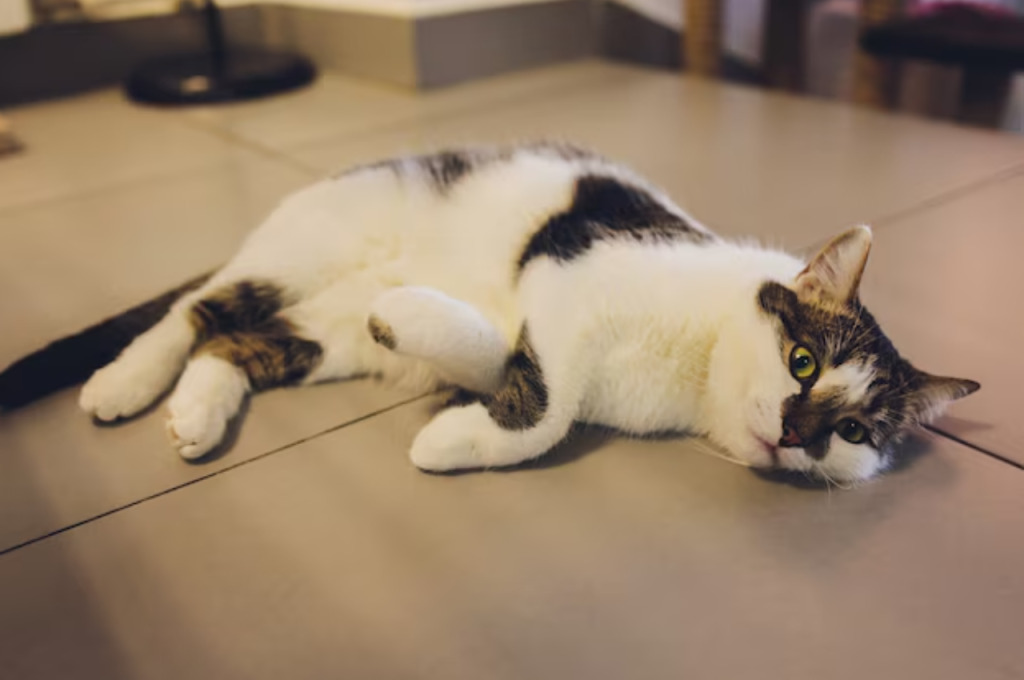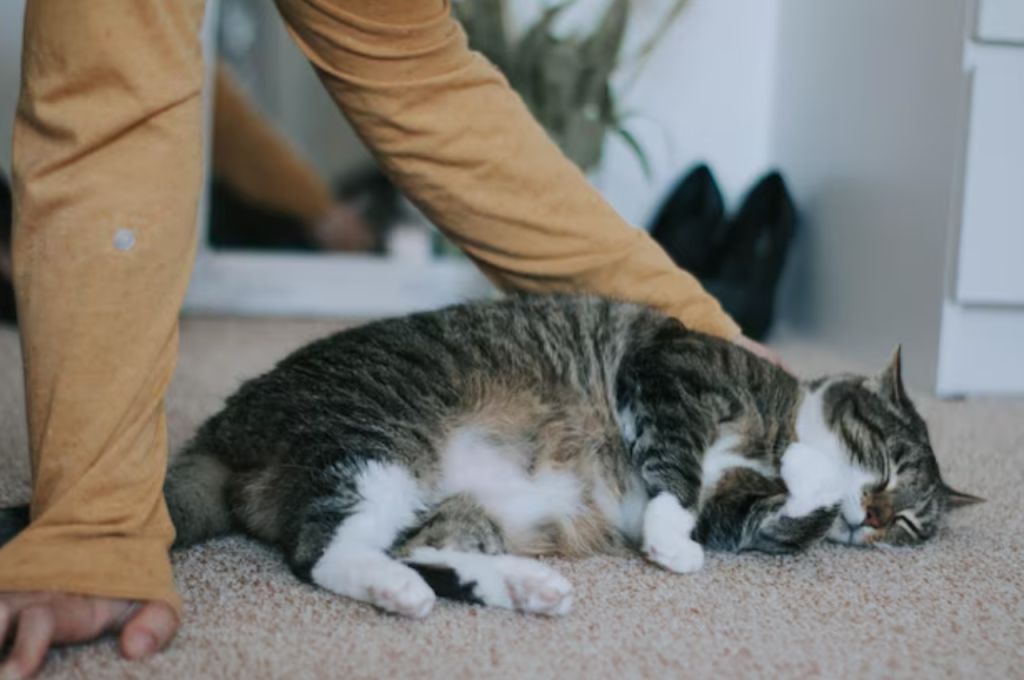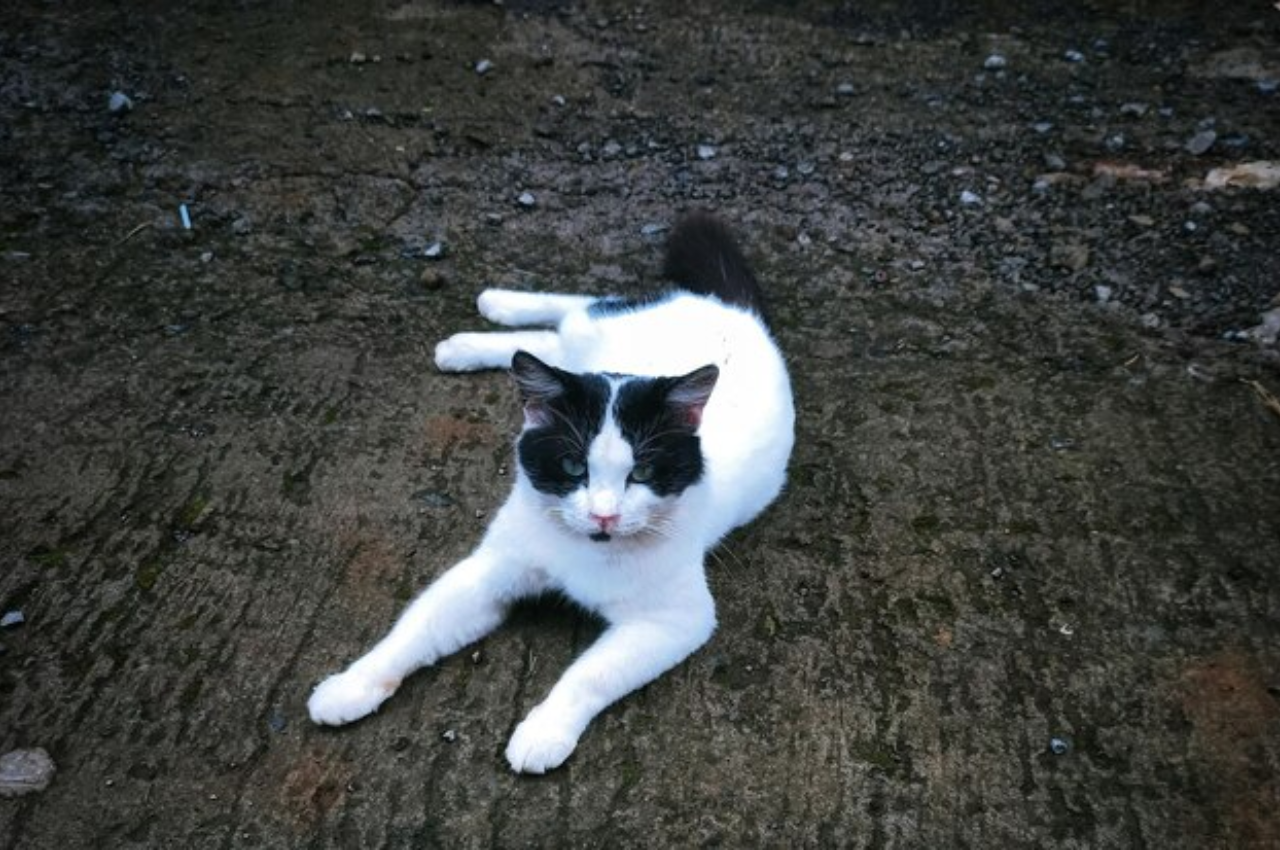Abnormal cat behavior refers to any unusual actions or reactions displayed by a cat. It can include changes in eating or grooming habits, aggression, excessive meowing, or hiding.
These behaviors may indicate underlying health issues, stress, or discomfort. Understanding and addressing abnormal behavior is essential for a cat’s well-being and the harmony of the household. As a cat owner, recognizing and addressing abnormal behavior promptly can help improve your cat’s quality of life and strengthen your bond with your feline companion.
In this blog, we will explore common abnormal cat behaviors, their potential causes, and how to manage and address them effectively to ensure a happy and healthy cat.
Introduction to Abnormal Cat Behavior
Cats are known for their mysterious and independent nature, but sometimes their behavior can be puzzling. Understanding abnormal cat behavior is crucial for cat owners to ensure their feline friends’ well-being.

Identifying Normal Vs. Abnormal
Normal cat behavior includes grooming, exploring, and napping. Abnormal behavior like aggression, excessive meowing, or litter box issues may indicate an underlying problem.
Why it Matters
Recognizing abnormal cat behavior early can help prevent serious health issues and improve your cat’s quality of life.
Common Signs of Abnormal Behavior in Cats
Common signs of abnormal behavior in cats can be indicative of underlying physical or emotional issues that require attention. Recognizing these signs is essential for maintaining the well-being of your feline companion.
Excessive Vocalization
Excessive vocalization is one of the common signs of abnormal behavior in cats. This may include constant meowing, yowling, or caterwauling, especially if it’s out of the ordinary for your cat’s typical behavior.
Litter Box Avoidance
Litter box avoidance is another concerning behavior. If your cat suddenly starts urinating or defecating outside of their litter box, it could indicate an underlying health issue or emotional stress.
Unusual Aggression
Unusual aggression can manifest in various ways, such as hissing, growling, or even physically attacking people or other pets. Sudden aggression in a previously docile cat warrants attention and investigation.
Physical Health and Abnormal Behavior
Abnormal cat behavior can be a sign of physical health problems. It’s important to observe changes in their behavior, such as excessive scratching or grooming, hiding, or aggression, and bring them to a vet’s attention.
Link to Illness
Understanding abnormal cat behavior is crucial as it can often signal underlying health issues. Signs like excessive grooming, aggression, or sudden changes in appetite could indicate stress, pain, or illness. Observing these behaviors promptly and consulting with a veterinarian helps in diagnosing and addressing any potential health concerns early, ensuring your cat’s well-being and comfort. Regular check-ups and a safe, enriched environment also contribute to preventing and managing abnormal behaviors effectively.
When to See a Vet
If your cat displays sudden or extreme behavior changes, consult a veterinarian promptly. Observing and understanding your cat’s behavior can help in identifying potential health concerns early. Regular veterinary check-ups are essential to ensure your cat’s well-being. Seeking professional guidance can address abnormal behavior effectively.
Psychological Factors Influencing Cat Behavior
Understanding the psychological factors that influence cat behavior is crucial for cat owners and enthusiasts. Cats, like humans, can experience a range of emotions and psychological states that can affect their behavior. In this section, we will explore two important psychological factors: stress anxiety, and depression in cats.
Stress and Anxiety
Just like humans, cats can experience stress and anxiety in various situations. Common stressors for cats include changes in their environment, such as moving to a new home or the introduction of a new pet. Other factors like loud noises, unfamiliar people, and lack of mental stimulation can also contribute to stress and anxiety in cats.
When cats are stressed or anxious, they may exhibit certain behaviors to cope with their emotions. These can include excessive grooming, hiding, loss of appetite, aggression, or even inappropriate elimination outside the litter box.
As responsible cat owners, it is important to identify and address the sources of stress and anxiety in our feline companions. Providing a safe and predictable environment, offering plenty of mental and physical stimulation, and using calming techniques like pheromone diffusers or soothing music can help alleviate stress and anxiety in cats.
Depression in Cats
While depression is often associated with humans, cats can also experience this psychological state. Depression in cats can be triggered by various factors, such as the loss of a companion animal or a significant change in their routine.
Depressed cats may exhibit a range of symptoms, including decreased appetite, lethargy, withdrawal from social interactions, excessive sleeping, and a lack of interest in previously enjoyed activities. It is important to note that these symptoms can also indicate underlying medical conditions, so it is crucial to consult a veterinarian if you notice any significant changes in your cat’s behavior.

To help a cat experiencing depression, providing a stable and comforting environment is essential. Engaging in interactive play sessions, offering affection and attention, and ensuring a consistent routine can help lift their spirits. In severe cases, a veterinarian may prescribe medication to help alleviate the symptoms of depression and restore the cat’s overall well-being.
By understanding the psychological factors that influence cat behavior, we can create a nurturing environment and provide the necessary support to ensure our feline friends lead happy and fulfilling lives.
Environmental Triggers of Abnormal Behavior
Abnormal cat behavior can be influenced by various environmental triggers. These triggers may include changes in routine, new additions to the household, unfamiliar surroundings, or even the presence of other animals. Understanding these factors can help identify and address the underlying causes of abnormal behavior in cats.
Understanding the environmental triggers of abnormal cat behavior is crucial for cat owners to ensure the well-being of their feline companions. Cats are sensitive creatures, and changes in their surroundings can often lead to unexpected behavioral changes. In this article, we will explore two common environmental triggers that can contribute to abnormal cat behavior: changes in the household and lack of stimulation.
Changes in The Household
When it comes to changes in the household, cats can be particularly sensitive. Cats thrive on routine and familiarity, so any disruptions to their environment can cause stress and anxiety, leading to abnormal behavior. Some common household changes that can trigger abnormal behavior in cats include:
- Renovations or remodeling
- Moving to a new home
- Addition of new pets or family members
- Changes in the daily routine
It is important to note that cats may exhibit different signs of abnormal behavior in response to these changes. Some cats may become more withdrawn and hide, while others may become more aggressive or exhibit destructive behavior. Recognizing these changes and providing a supportive environment is essential to help cats adjust and alleviate any potential abnormal behavior.
Lack of Stimulation
Cats are natural hunters and require mental and physical stimulation to stay happy and healthy. A lack of stimulation can lead to boredom, frustration, and ultimately, abnormal behavior. Some signs that your cat may be lacking stimulation include:
- Excessive meowing or vocalization
- Excessive grooming or self-mutilation
- Destructive behavior, such as scratching furniture or chewing on household items
- Overeating or refusing to eat
To prevent abnormal behavior due to a lack of stimulation, it is important to provide a stimulating environment for your cat. This can include interactive toys, scratching posts, climbing structures, and regular play sessions. Additionally, creating a daily routine that includes mental and physical activities can help keep your cat engaged and satisfied.
By understanding and addressing the environmental triggers of abnormal cat behavior, you can create a safe and supportive environment for your furry friend, promoting their overall well-being and happiness.
Addressing Abnormal Behavior
Abnormal cat behavior refers to any unusual actions or habits displayed by cats that deviate from their typical behavior. It is important to address abnormal behavior in cats to ensure their well-being and identify any underlying health issues or environmental factors that may be causing the behavior.
Understanding what is considered abnormal behavior in cats can help pet owners provide appropriate care and seek professional advice when needed. Cats are known for their unique personalities, but sometimes their behavior can become concerning. Abnormal behavior in cats can be caused by a variety of factors such as medical conditions, changes in the environment, or stress. As a responsible cat owner, it is important to identify and address abnormal behavior to ensure the well-being of your feline friend. In this article, we will discuss some common abnormal cat behaviors and techniques for addressing them.
Behavioral Modification Techniques
Behavioral modification techniques can be used to address various abnormal behaviors in cats. These techniques involve rewarding desirable behavior and discouraging undesirable behavior. One common technique is positive reinforcement, which involves rewarding your cat for good behavior with treats, toys, or affection. Another technique is clicker training, which uses a clicker to signal good behavior and reward your cat. Punishment should be avoided as it can lead to fear and aggression in cats.
Creating a Safe Space
Creating a safe space for your cat can help alleviate stress and anxiety, which can be a cause of abnormal behavior. A safe space can be a room or an area in your home where your cat can retreat to when feeling overwhelmed. The space should have all the necessary amenities such as food, water, a litter box, and toys. You can also use pheromone sprays or diffusers to help create a calming environment for your cat. Addressing abnormal behavior in cats is crucial for their health and well-being.
By using behavioral modification techniques and creating a safe space for your cat, you can help alleviate stress and anxiety, and encourage good behavior. If you notice any persistent abnormal behavior in your cat, it is recommended to consult with a veterinarian to rule out any underlying medical conditions.
When to Seek Professional Help
Recognizing abnormal behavior in your cat is crucial for their well-being. If you notice persistent changes in behavior, it’s essential to seek professional help. Here are signs that indicate the need for professional intervention:
- Aggression or fearfulness toward family members or other pets
- Excessive vocalization or sudden onset of loud meowing
- Marked changes in eating or litter box habits
- Excessive grooming leading to hair loss or skin irritation
- Unexplained weight loss or gain
Behavioral Specialists for Cats
Behavioral specialists for cats are professionals who have expertise in feline behavior. They can offer valuable insight into your cat’s abnormal behavior and provide effective solutions. These specialists employ various techniques to address behavioral issues and improve your cat’s well-being.
The Role of Veterinary Behaviorists
Veterinary behaviorists are veterinarians with specialized training in animal behavior. They can diagnose and treat complex behavioral problems in cats. By collaborating with these experts, you can gain a comprehensive understanding of your cat’s behavior and access tailored treatment plans to address any underlying issues.
Preventing Abnormal Behavior in Cats
Cats, like humans, can exhibit abnormal behavior, which may indicate underlying health or environmental issues. By taking proactive measures, cat owners can help prevent abnormal behavior and ensure their feline companions lead healthy and happy lives.

Routine and Consistency
Establishing a consistent routine for feeding, playtime, and interaction can help reduce stress and anxiety in cats. Daily activities, such as feeding and play sessions, should occur at the same times each day. This helps create a predictable environment, promoting a sense of security for the cat.
Regular Health Check-ups
Regular veterinary check-ups are essential for maintaining a cat’s overall health. Scheduling annual examinations allows veterinarians to detect and address any potential health concerns before they escalate. Additionally, vaccinations and preventive care can help prevent common illnesses and ensure the cat’s well-being.
Conclusion
To conclude, abnormal cat behavior can be an indication of an underlying health issue or simply a behavioral problem. It is important to monitor your cat’s behavior and seek veterinary advice if necessary. Understanding your cat’s natural behavior can help you identify abnormal behavior and take appropriate action.
By providing a safe and stimulating environment, regular veterinary checkups, and proper training, you can prevent and manage abnormal behavior in your feline companion.
